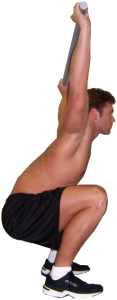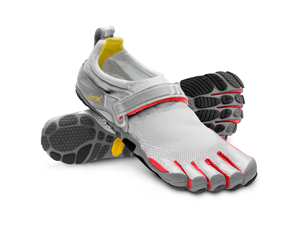
What is Achilles Tendonitis?
Results of a study done in the International Journal of Sports Medicine showed the training and injury characteristics of Male Elite, Club and Recreational athletes over a five year period of which:
- 75% of elite athletes suffered at least 1 overuse injury
- 75% of club athletes suffered at least 1 overuse injury
- 56% of recreational athletes suffered at least 1 overuse injury
The Patella tendon, Achilles tendon and ITB showed to be the most common injuries sustained!
This means… If you’re a runner, you are GUARANTEED to get one of these injuries.
Definition
Achilles Tendonitis – Although not an accurate term, it is the more common term for pain in the back of the heel with inflammation in the tendon of the Calf Muscles where it attaches onto the Calcaneus (heel bone)
Achilles Tendinopathy – this is the correct Medical Term used to describe a degenerative change in the Achilles Tendon. As there is no real inflammatory reaction occurring in the tendon and only small lesions are evident, the traditional “Anti-Inflammatory” treatments are no longer applicable in treating this condition.
As this condition is very common in athletes here are a few…
Signs and Symptoms
- Tight Calf muscles
- pain at the back of the heel and into the Tendon
- pain worse in the morning
- typically a “get up and go” pain that loosens up after a few steps
- pain going up and down steps
- increased pain during training and hill running
How does this develop?
To determine the cause of the condition we as physio’s need to assess the origin of the problem and I would usually go through a few key points to establish this, namely…
- Flexibility – I use a quick Overhead Squat for this
- Biomechanical – I would perform a Gait Analysis to determine abnormal biomechanics like overpronation at the ankle etc
- Footwear – does the person use the correct type of shoes? Is it providing sufficient support/shock attenuation/correction etc? And if not, is there a need for orthotics?
- Training – has there been an increase or change in the training routine or volume
- Combination – are there multiple factors that need to be addressed or all of them?
Flexibility
By using the overhead squat I can very quickly establish what the range of motion is in the ankle, knee and hip etc. This is also a great way to determine which muscles may be shortened and need to be focused on with a stretching routine.
When performing the overhead squat I look for proper alignment and full range of motion of the joints (as pictured)

If a person isn’t able to replicate the squat, I try to determine where the restriction is occurring. Is it tightness in the calves, hip flexors, low back, mid back, shoulders etc?
Invariably most club/recreational athletes tend to neglect a proper warm up and stretching routine as part of their training and I constantly have to remind them of how important this is.
As in most cases I see, it’s usually not the increase in training load that has caused the injury, but lack of recovery and sufficient stretching that has brought it about! Moral of the story? Stretch more often Bru!
Biomechanical
Without going into too much technical detail… I look at a person’s gait cycle while walking AND running on the treadmill. I also perform this analysis with and without shoes and also have the benefit of video recording these sessions so I can slow this down with computer software and also look at it from various angles.
This allows me to establish if this person is a fore/midfoot striker or a heel striker/shod runner, a excessive pronator or supinator during the mid-stance cycle etc etc… It also provides valuable information on what structures might be undergoing increased stress and strain during the gait cycle and what structures could be compensating for this effect.
I’m then able to provide feedback to this person regarding exercise or any joint instability he/she may have and what we would need to do to correct this.
Footwear
 A lot can be said about footwear and what type of shoe is the best fit or should you be wearing an anti-pronating shoe or not. But in all fairness… The ONLY way of knowing what type of shoe is best suited is to have a proper biomechanical assessment done WHILE running in different pairs of shoes! One of the biggest mistakes you can make is by going on the “price tag” or “look” of the shoe. And of course, going by what your mates have told you or listening to the salesman go on about how you pronate by looking at the “wear” on the sole of your shoe.
A lot can be said about footwear and what type of shoe is the best fit or should you be wearing an anti-pronating shoe or not. But in all fairness… The ONLY way of knowing what type of shoe is best suited is to have a proper biomechanical assessment done WHILE running in different pairs of shoes! One of the biggest mistakes you can make is by going on the “price tag” or “look” of the shoe. And of course, going by what your mates have told you or listening to the salesman go on about how you pronate by looking at the “wear” on the sole of your shoe.
On numerous occasions clients would come in looking very distraught as they supposedly bought the “top of the range” shoe and handed over a lot of cash only for me to do an assessment on them and mention it’s the wrong shoe! Now I don’t propose that the sales guys don’t know what they’re doing, but be sure to do your own research on different shoes and what they were designed to do before handing over your money. Otherwise your expensive pair of trainers come with a free attachment of Achilles Tendinopathy… with NO MONEYBACK gaurantee! (how was that for a sales pitch?)
As I am into barefoot running I also get many clients asking me about the Vibram Fivefingers and if it is suitable for them to get into that style of running. As this is such an extensive topic, I will cover this in a future post.
Training
As I mentioned earlier, Achilles Tendinopathy usually develops due to an increase in volume of training and also (more notably) with lack of recovery and stretching! Typically athletes will start increasing their volume and load a few weeks before an event and the intensity could peak around six weeks before an event. Now at this stage most athletes would have noticed a small niggle in their calves or Achilles, but tend to “push through” their pain as they believe it will go away. I’m afraid it won’t! Unless you get it seen to straight away.
As this is also a crucial time in their preparation, most athletes tend to ignore the warning signs as they just can’t bear the thought of not training. Needless to say some of them would leave it until it is so bad or only get it seen to a week or two before the event because they “have to be ready for the event”. This is almost an impossibility to fix at this point as there has been so much damage caused to the muscle and tendon that many athletes get quite upset when you tell them what the problem is and what is needed to get it fixed.
The normal time frame of healing and rehabilitation for a severe Achilles Tendinopathy could take up to 12 weeks so it’s no wonder they get upset when you have to tell them it’s going to take a while for it to heal. Early detection and intervention is the key here! As soon as you pick up a niggle or feel any of the signs and symptoms its time to pay your therapist a visit or start an intervention strategy yourself. Stretching and recovery would be a great place to start!
In the next post I will discuss how you can assist in treating your own Achilles tendon and what treatment techniques I have found to be the best intervention protocol to fix an “Achilles Heel”
Also be sure to check out the other posts in the Ankle series, Swollen Ankle, Ankle Alphabet, Towel Scrunching.
Happy Running (and stretching)

HI. My wife has been suffering with a foot problem for two years now. We have been to doctors, chiropractors, shock wave therapists, you name it but her condition worsens as is her quality of life. It started with a diagnosis of Plantar Fasciitis which was bad enough. Injections did not help. Then a bulge appeared at the back of the heel at the achilles tendon. Can you please give us some constructive advise on what this is and how she can get some relief. We have been told so many different things. We are throwing money away on bad advice. It breaks my heart to see her suffering and no one able to help her.
Hi Cyril,
Thanks for your comments… developing a “bulge” in the achilles tendon can mean she has chronic Achilles Tendinosis (view the post fix-achilles-tendonitis) or if its at the back of the heel, she could have something like retro calcaneal bursitis.
This is a small sack of fluid at the back of the heel between the heel bone (Calcaneus) and the Achilles Tendon itself. This bursa acts as a “lever” in the “rope and pulley” system of the Achilles on the ankle joint. In other words, the Tendon wraps over the bursa where it inserts into the heel to enable it to move the ankle joint. If the tendon or calf becomes very tight and restricted it causes friction over the bursa and the bursa becomes inflamed.
She needs to start work on her calf muscles (stretches, foam rolling… see the exercises on this site) and she can also start with the exercises in the Fix Achilles Tendonitis post to strengthen the tendon. Get in touch with a physio who can do dry-needling on the calf and bursa! Hope this helps